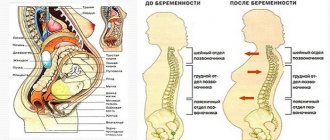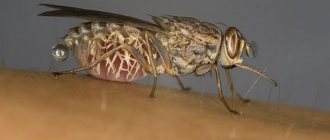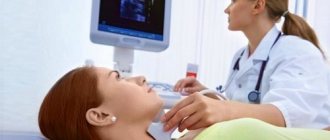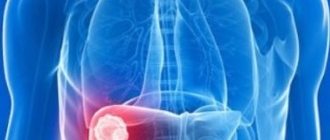Having heard such a diagnosis as cardiac bradycardia, many wonder what it is, how serious it is and how to treat the pathology. In some situations, such an ailment does not cause concern among specialists, but it is necessary to contact it.
Bradycardia is a weakening of the functional ability of the heart, a decrease in heart rate. The normal rate is considered to be from 60 to 90 beats/min, a moderate rate is 50 beats/min, but a decrease in frequency to 40 beats/min is already a pronounced dysfunction.
What is cardiac bradycardia
Signs of cardiac bradycardia depend on several factors, primarily on the triggering cause. Regarding the etiology, appropriate treatment is prescribed. A pathological condition occurs against the background of surges in blood pressure, endocrine disorders, and autonomic abnormalities.
The heart is one of the most important human organs, so we must know what diseases can await it. It is important to understand in detail what cardiac bradycardia is, how it manifests itself and how the disease can be cured.
General description of methods of treating the disease
If indicators characteristic of this pathological condition appear, such as a feeling of pain in the heart area, difficulty breathing, the appearance of shortness of breath even with a small amount of stress received (physical or psychological), as well as chronic fatigue syndrome, drugs for bradycardia should be prescribed.
Since this disease may vary in stages of its development, at which the treatment system may be different, you should undergo a complete health examination before starting treatment.
In case of cardiac bradycardia, the attending cardiologist may prescribe drugs whose action is aimed primarily at eliminating the existing external manifestations of the disease.
Diagnosis of bradycardia
When diagnosing bradycardia, use:
- physical diagnostic methods (examination, palpation, percussion, auscultation)
- electrocardiographic examination
- 24-hour ECG monitoring
- Ultrasound of the heart
- load bicycle ergometry
- transesophageal electrophysiological study of cardiac conduction tracts. Using this examination, it is possible to determine whether bradycardia is organic or functional in nature.
Another way to detect arrhythmia is to measure pressure using an electronic tonometer. Modern electronic tonometers, as well as Microlife tonometers, have a pulse measurement sensor.
Causes of bradycardia - physiology and disease
The causes of bradycardia can be quite harmless. Sometimes it is diagnosed in completely healthy people. For example, during sleep it is permissible to slow down the heart rate to 40 or even 30 beats per minute.
Physiological bradycardia is often observed in persons with well-trained muscles, as a rule, these are athletes.
In such people, the heart muscles are sufficiently trained; they do not require additional effort to saturate the body with oxygen.
Pathological bradycardia can be caused by heart diseases:
- myocardial infarction;
- myocarditis;
- ischemic disease;
- endocarditis;
- vascular atherosclerosis.
First aid for an attack of bradycardia
If a person has certain symptoms indicating the presence of bradycardia - dizziness, weakness, fatigue - you need to count his pulse. For these purposes, a tonometer is used. If the resulting figure is less than 40 beats per minute , the patient does not have serious illnesses against which bradycardia could develop, and it is recommended to take the following measures:
- Brew strong black tea/coffee. The caffeine contained in these drinks will make you feel better within just a few minutes. Those people who regularly encounter this kind of problem should purchase tinctures of belladonna and ginseng at the pharmacy and add them to tea or coffee, 15 drops per glass;
- take a warm bath;
- perform a set of physical exercises. If the weather permits, you can go for a run. Walking up the stairs and doing exercises also help increase your heart rate;
- use medications (Zelenin drops), through which the pulse can be increased in a matter of minutes. Without prior consultation with a cardiologist, it is prohibited to attempt to take any medications - side effects may occur and exacerbations may develop.
In cases where the tonometer shows a pulse below 35 beats per minute , you must call an ambulance. Emergency care measures consist of the following components:
- the patient should lie completely on his back. A small cushion is placed under his head: a rolled towel, a small pillow. The legs should be slightly higher above the body level, which is achieved by placing them on pillows. If a person has lost consciousness, he should be laid on a hard surface and a small cushion placed under his shoulders;
- if there is pain in the chest area, the patient should be given nitroglycerin tablets/solution. The tablet is placed under the tongue, the solution is dripped onto sugar (no more than 2 drops). The onset of action of this drug is quite short, does not exceed 5 minutes;
- the use of isadrin is permissible for regular heart rhythm disturbances, when the doctor approves its use. If the patient’s condition worsens, one tablet is placed under the tongue. Relief will occur within 10 minutes. If the symptoms of bradycardia make themselves felt for the first time, instead of isadrin, use belladonna extract in tablets, the effect of which occurs within 30-35 minutes. The specified drug (2 tablets) must be ground into powder.
In case of loss of consciousness, the victim should be provided with the following first aid:
- performing artificial respiration. To do this, the victim’s nose is pinched with one hand, and the other hand is placed under the neck. The one who provides assistance must take a deep breath, press his lips tightly to the victim’s lips, and inhale air. The patient must exhale independently. After 3 blows, you need to measure your pulse. It is worth continuing such manipulations until the patient’s ability to breathe independently is restored;
- Indirect cardiac massage is indicative in cases where a person’s pulse cannot be felt. To carry out this procedure, you need to apply pressure to the chest in the area of the heart, which will facilitate the resumption of blood circulation and restoration of breathing. Place a palm on the third lower lobe of the chest, perpendicular to the neck, and a second one on top, after which short, quick pressure is applied. The number of pressures should be 10-12, after which two breaths are taken.
This type of assistance must be provided until the patient’s breathing is restored/an ambulance arrives.
Symptoms
The rhythm of the heartbeat affects the rate of delivery of nutrients to the internal organs. With insufficiently intensive nutrition, normal organ function is disrupted.
The brain cells are the first to be affected. Therefore, the main symptom of bradycardia is increased fatigue and general weakness.
Loss of consciousness is possible: from short-term minor to serious long-term, which can even cause death.
General symptoms of the disease that are not dangerous:
- constant feeling of fatigue;
- semi-fainting state;
- pressure disturbance;
- increased sweating;
- breathing problems;
- chest pain, pressing in nature;
- attention disorder.
Single attacks may be asymptomatic.
When the heart rate is 40 beats per minute or lower, a severe form of the disease is noted. The symptoms accompanying this form of the disease are more serious and can cause concern for human life and health.
Symptoms of bradycardia appear in the following form:
- constant fatigue;
- state of fainting;
- dizziness that occurs with a certain frequency;
- increased sweating;
- labored breathing;
- feeling of squeezing pain in the heart area;
- inability to concentrate on anything.
Having recorded the symptoms, treatment should be started without delay, as delay can lead to serious consequences. Only a doctor can make a final diagnosis and prescribe treatment. This is due to the fact that treatment is aimed at eliminating the cause of the disease, and only then at relieving the symptoms.
In certain cases, signs may not appear; bradycardia can manifest itself in attacks that pose a direct threat to life. Therefore, it is necessary to constantly monitor the heart rate and measure pressure with a special device.
class=”fa”>The disease can pose a threat to health (especially in severe form), so this disease must be treated immediately.
Conservative treatment of bradycardia
As a rule, drug treatment is prescribed, which consists of taking special medications. All drugs are aimed at normalizing the functioning of the sinus node, which is responsible for generating electrical impulses.
The impulses cause the heart muscle to contract. Typically, patients are prescribed one of the following medications:
- atropine sulfate;
- ephedrine hydrochloride;
- ipratropium bromide.
All medications are administered by injection. Treatment of bradycardia is carried out in a hospital or at home, but under the constant supervision of a doctor. The dose of funds is selected individually.
If the patient does not have acute manifestations of the disease, the doctor may prescribe maintenance therapy, which consists of taking tablets containing caffeine.
class=”fa”>Caffeine has a tonic effect, so the heart begins to contract at a normal speed.
The volume of drugs is selected individually and is often prescribed one tablet twice a day. It is not recommended to exceed the prescribed dose, even if the patient feels unwell, as this may cause a significant increase in blood pressure.
If drug treatment does not produce results, then cardiac stimulation is performed. It involves installing a device – a pacemaker. This device generates electrical impulses that stabilize the heart and bring muscle function to a normal level.
Installation of a pacemaker involves surgery. It is worth remembering that after installation it is necessary to change the batteries of the device.
First aid for an attack
If the attack occurs unexpectedly, the person needs urgent help. The first thing to do is give the patient a drug that increases the heart rate. The most effective medicine is Zelenin drops. This medicine not only speeds up your heart function, but also reduces the risk of other symptoms. The drug is based on medicinal herbs and:
- lowers blood pressure;
- increases the impact force of the muscle.
Symptoms of bradycardia, important signs
As you can see, signs of bradycardia can be from external causes, as well as physiological and pathological. Since sinus bradycardia is often a variant of the norm, there are no symptoms reflecting circulatory failure: the infrequency of heart contractions is compensated by a larger output.
Symptoms of bradycardia occur when decompensation occurs and oxygen starvation of the brain begins.
Then there are:
- attacks of weakness;
- dizziness;
- a pre-fainting state appears;
- cold sweat occurs;
- sometimes there is ringing in the ears;
As a rule, slowing contractions does not cause hypotension: the pressure during bradycardia is reduced due to the influence of the underlying disease, for example, hypothyroidism.
Classification
Formally, bradycardia refers to rhythm disturbances: bradyarrhythmias, but sinus bradycardia, a common bradycardia in which there are no blockades or disturbances in the conduction of cardiac impulses, is a variant of the norm. Other representatives of bradyarrhythmias are those arrhythmias in which ventricular contractions, and therefore cardiac output, occur less frequently than usual.
These include:
- Sinoatrial blocks;
- Atrioventricular block;
In addition, this phenomenon is divided into physiological and pathological types, as well as acute (with a heart attack, myocarditis) and chronic (with atherosclerosis and endocrine diseases).
Diagnostics
The “gold standard” for diagnosing all arrhythmias is ECG and Holter (24-hour) monitoring, which gives a complete picture of all attacks of arrhythmia, including bradycardia.
To establish a connection between this phenomenon and organic lesions of the heart, ultrasound of the heart is used, and to connect it with physical activity, bicycle ergometry is used.
Drugs for the treatment of bradycardia
Bradycardia should be treated by a cardiologist.
Before prescribing medications, the doctor finds out the nature of the disease and its cause. It is important to know whether the disease has a physiological form, or whether it is a pathology associated with concomitant diseases.
In the first case, no treatment is required. In the case of pathology, it will be necessary to eliminate the cause that caused the attack of bradycardia.
If the heart rate decreases, the patient will need to take anticholinergic drugs. These drugs include drugs that block the effects of the parasympathetic nervous system on the body.
The following medications are used to treat bradycardia:
- platiphylline;
- atropine;
- metacin;
- homatropin.
In addition, in this case, antiarrhythmic drugs that regulate heart function are indicated. Bradycardia is treated medically with the following drugs:
- lidocaine;
- propatheon;
- gift;
- verapamil.
Potassium and magnesium salts also have an antiarrhythmic effect.
Is bradycardia an arrhythmia, that is, a rhythm disorder that must be treated? Currently, doctors have a clear position:
- if this bradycardia is sinus, there are no blockades of impulse conduction and there are no symptoms of oxygen starvation, loss of consciousness or convulsions, then this is a common variant of the norm;
- if the slowing of the heart rate is caused by another disease, for example, toxic damage due to diphtheria or a decrease in the level of thyroid hormones, then the underlying disease must be treated.
Drugs for the treatment of bradycardia are rarely used; much more often it is necessary to discontinue the medicine that caused it. This happens very often when treating hypertension in old age, when patients take pills by the handful.
| What to take | pharmachologic effect | Recommended Doses |
| Atropine | The drug is an anticholinergic drug that inhibits the excitation of the parasympathetic nervous system. Reduces the tone of the vagus nerve and thereby increases heart rate. | 0.6-2 mg up to three times a day. Intravenous or subcutaneous administration. |
| Isoprenaline (intravenous administration) | The drugs are analogues of adrenaline. They increase heart rate by stimulating adrenergic receptors in the heart muscle and increasing the tone of the sympathetic nervous system. | From 2 to 20 mcg per kilogram of body weight per minute until heart rate normalizes. |
| Isoprenaline (tablets) | From 2.5 to 5 mg up to four times a day. | |
| Isadrin (intravenous administration) | From 0.5 to 5 mg per minute until heart rate normalizes. | |
| Izadrin (under the tongue) | From 2.5 to 5 mg until completely dissolved up to three times a day. | |
| Eufillin | The main action is bronchodilator. It is also used for bradycardia. Increases heart rate, improves oxygen supply to tissues. | 240 to 480 mcg intravenously (once daily). |
Panangin
A combined action drug containing magnesium and potassium aspartate. Available in tablet form and as a solution for injection.
Potassium and sodium are the main intracellular ions. Their interaction plays an important role in maintaining normal cell functioning. Potassium takes part in the conduction of impulses along nerve fibers and their entry into the synapse, the implementation of muscle contractions and the maintenance of normal heart function.
It is prescribed as an independent drug in the following cases:
- lack of potassium caused by taking diuretics (furosemide);
- lack of potassium or magnesium due to other reasons.
Complex therapy with the participation of panangin is prescribed:
- with painful sensations in the heart due to ischemia;
- abnormal heart rhythm due to myocardial infarction or overdose of glycosides;
- combined with cardiac glycosides;
- heart failure.
Surgical
To increase heart rate, products that contain ginseng or belladonna root are often taken.
In severe bradycardia, when medications do not help, a pacemaker (or surgical drug) is introduced.
This method is used to treat bradycardia and further control the functioning of the heart. In some cases, a pacemaker corrects cardiac activity.
The method is used in the following cases:
- disease progression;
- lack of effect from drug therapy;
- the disorder developed after taking certain medications;
- signs of tachycardia are observed;
- exacerbation of thromboembolism;
- frequent loss of consciousness.
Treatment of severe bradycardia involves surgery, namely the implantation of a pacemaker, the task of which will be to control the contractions of the heart muscle. This device includes electrodes, an electrical impulse generator and a control microchip, thanks to which an individual program can be installed for each patient, allowing you to set the duration and frequency of heart contractions, the strength of the electrical impulse and other functional characteristics.
Implantation of a pacemaker for bradycardia is indicated in the following cases:
- If the patient suffers from short-term but regular fainting.
- If bradycardia alternates with tachycardia (tachy-brady effect), when you cannot use drugs indicated only for a rare pulse.
- In the presence of chronic or progressive heart failure.
- When drug treatment is ineffective.
- When bradycardia is a consequence of the use of drugs that cannot be withdrawn. This usually happens in the presence of a cardiac disease, the manifestations of which can only be stopped with these drugs. Here conservative treatment is useless.
- In the presence of thromboembolic exacerbations.
Two months after implantation of the pacemaker, the patient fully recovers.
The pacemaker needs to be replaced every five years, which is explained by the life of the batteries that power it.
Bradycardia of the heart
Bradycardia itself is the tip of the iceberg of its causes. What is normal for some people is deadly for others. Thus, an athlete with a well-trained heart muscle, adapted to high loads, which for him, due to their constancy, represents the normal rhythm of life, at rest does not need a large supply of oxygen to the blood - the heart beats slowly. A newborn child experiences enormous stress associated with adaptation to the outside world, increased growth of organs and tissues, so a slowdown in heart rate causes anxiety and panic in his mother. At least it should be.
During the day, we usually all perform one or another load, thereby loading our hearts with work. Even when it seems that we are just sitting at the table, physically not moving, holding the body in a certain position is also work. Mental and emotional work is sometimes no less stressful than physical work. And only at night the body fully relaxes, the “kingdom of the vagus” begins and the heart rate slows down. It is possible that he will slow down within 50-55 beats. Bradycardia will not be a manifestation or symptom of any disease - this is the norm. Therefore, bradycardia, depending on the situation, can be either absolute or relative in nature.
Considering the most important function of the heart - the ability to contract in a given mode (automatism), and it is due to this that the heart works at one frequency or another, it is necessary to briefly recall the conduction system of the heart. The conducting system, or local power plant, is capable of generating impulses with such a frequency that is currently necessary for adequate functioning of the body. Any serious enterprise must have a director and his deputies. And here everything is the same. The first center of automaticity, which sets the rhythm and suppresses all others with its pressure, is the sinoauricular node (CA node). It is hidden in the right atrium and sends its impulses along special tracks. However, there are quite a lot of theories on this matter. How many paths there are and whether they exist or the impulse spreads diffusely, the answer in this case is not so important. The important thing is that there are so many impulses that they suppress any activity of the underlying cells. Nature, modeling our heart, made sure that if one pacemaker fails, others will work, and any muscle cell of the heart can generate an impulse. The CA node generates impulses at a frequency of 60 per minute. With an increased need for oxygen, the body gives signals, and our “director” begins to work faster. Or vice versa - external signals provoke it to work less often. When external regulation is not so perfect, the CA node does not work regularly, sometimes often, sometimes slowly (arrhythmically). This is typical for children and adolescents.
When the CA node can no longer perform its function, the AV node and His bundle take over its role. Since they are not so powerful, the impulses from them will come with a lower frequency, i.e. There will almost always be cardiac bradycardia. Almost always, because with physical activity or exposure to medications, the rhythm may become more frequent. Let us consider the causes of bradycardia in more detail.
Why is drug treatment dangerous?
Drug therapy is the most common and effective method of treating the disorder. Different medications affect the heart in specific ways, increasing the heart rate and preventing other symptoms.
An important effect of drugs for the treatment of cardiac bradycardia is an increase in heart rate and increased blood pressure. Taking such drugs compensates for impaired blood circulation.
Anticholinergics
Anticholinergics are medications that block the influence of the parasympathetic nervous system on internal organs. Such drugs are prescribed for decreased heart rate, low atrioventricular conduction and other disorders.
Scopolamine has the opposite effect: the drug has a sedative effect and is often prescribed for vestibular disorders (dizziness, loss of balance, impaired gait).
The drug platiphylline relieves spasms, dilates blood vessels and lowers blood pressure. Metacin enters through the barrier between tissue and blood and has little effect on the central nervous system. Homatropine, compared to atropine, has less activity and duration of action.
Causes of arrhythmia with a tendency to bradycardia
When there is a disease of the nervous system or internal organs, the activity of the vagus nerve increases, which slows the heart rate. Non-cardiac causes of bradycardia include:
- vegetative-vascular dystonia;
- neurotic conditions with disorders of the autonomic nervous system;
- reflex effect on the carotid sinus (compression by a collar or tie), pressure on the eyeballs;
- intracranial hypertension (edema, hematoma, brain contusion, meningitis);
- peptic ulcer;
- low thyroid function.
With inflammatory or sclerotic damage to the myocardium in the area of the sinus node, the ability to create a cardiac impulse decreases. Bradycardia occurs with rhythmic but rare contractions of the heart, alternating fast and slow rhythms, and movement of the source of impulse generation outside the sinus node. This situation can result in a complete inability to produce the electrical signal to cause the heart to contract, causing the heart to stop completely.
Conduction system of the heart
If the propagation of the impulse through the myocardium is disrupted - blockage of the conduction pathways - then some of the signals cannot reach the ventricles, which inhibits the rhythm of contractions.
Bradycardia can develop when the body is poisoned:
- medications - cardiac glycosides, antihypertensives, morphine, potassium preparations;
- microorganism toxins – sepsis, typhoid fever;
- accumulation of nitrogenous compounds in renal failure;
- phosphorus.
Drugs for the treatment of bradycardia
If a person suffers from hypertension and bradycardia at the same time, drugs must be selected extremely carefully, since some drugs for hypertension affect the heart rate.
In this case, it is unacceptable to take beta blockers, because they reduce blood pressure by reducing the frequency of contractions, and in the case of bradycardia this is unacceptable.
The following drugs are suitable for patients:
- alpha blockers;
- calcium antagonists;
- angiotensin 2 antagonists;
- diuretics;
- ACE inhibitors.
These drugs affect vascular tone. If a person suffers from severe bradycardia, it is recommended to consult a doctor, since in this case treatment is selected individually.
Extrasystole is a pathology of the heart muscle in which premature contractions are observed. Treatment consists of taking certain medications. Prescription of drugs and dosage is carried out individually by a doctor. The following drugs are prescribed:
- Atenolol;
- Bisoprolol;
- Panangin;
- Diltiazem;
- Carbamazepine.
Fetal bradycardia
Imperfect regulation of the peripheral nervous system, its sympathetic and parasympathetic divisions (in the fetus the sympathetic influence predominates), intensive growth of tissues and organs, requiring a huge amount of energy, forces the heart to work at an accelerated rate. What would be considered an increased heart rate (tachycardia) for an adult would be normal for a fetus.
The normal heart rate for a growing organism is 110-160 per minute. Anything less than a frequency of 110 per minute is considered bradycardia. This is a very dangerous condition, because, as stated above, active growth and maturation is underway. The slightest inhibition in this process can lead to serious problems in the formation of organs and tissues, especially the brain.
The causes of fetal bradycardia can be:
- Failure of the mother of the unborn baby to follow simple rules - do not smoke, do not drink alcohol, walk more, do not eat food rich in chemical additives and dyes. In a word, the expectant mother forgot what a healthy lifestyle is;
— Taking medications that are toxic to the fetus by a pregnant woman (be sure to read the instructions carefully);
— The woman has chronic diseases of the lungs, heart, anemia. The appearance of anemia during pregnancy. Exacerbations of chronic diseases, especially infectious ones, during pregnancy in the expectant mother;
— The presence of stressful situations or great stress in a pregnant woman can lead to severe suffering for the fetus; — Congenital anomalies of fetal development. These may be formed malformations of the heart, brain and other internal organs, Rhesus conflict;
— Multiple pregnancy, high or low water;
- Severe, long-term toxicosis;
- A complication such as premature placental abruption;
— An urgent situation of fetal distress, such as entanglement in the umbilical cord.
The reasons may be different, but their outcome is the same - the occurrence of bradycardia entails fetal suffering and the development of hypoxia. Both chronic hypoxia and acute hypoxia directly threaten the life of the unborn human being. If treatment measures are not carried out in a timely manner, irreversible consequences may occur - the development of defects of both organs and systems and/or fetal death.
Treatment of fetal bradycardia consists of the following measures:
— First of all, treatment should be preventive in nature and aimed at the mother’s condition. Organizing her daily routine, giving up bad habits, normalizing nutrition and frequent walks in the fresh air will help not only the mother regain strength, but also the fetus to avoid worsening hypoxia. The expectant mother must be explained about the benefits of taking iron supplements if she has anemia; it is also necessary to compensate for her other chronic diseases, especially infectious ones, if any;
— Dynamic monitoring of the fetus. The easiest way to carry it out is by counting the frequency of contractions of the fetal heart during CTG (cardiotocography), using a statoscope, the doctor listens to the fetal heartbeat through the woman’s abdominal wall, starting in the second half of pregnancy, or with ultrasound (performed starting from the 12th week of pregnancy, it is possible to conduct an intrauterine ultrasound examination). These research methods are carried out a certain number of times during pregnancy in order to assess the development of the fetus at different stages of pregnancy and promptly detect bradycardia, if any.
— If the fetus is viable and the gestational age is long, and the suffering of the fetus is significant, a decision may be made to terminate the pregnancy by caesarean section. Such decisions are most often made in a maternity hospital, collectively.
Fetal hypoxia can also occur during childbirth and is manifested by a decrease in heart rate. Therefore, obstetricians must monitor this indicator throughout the entire birth process. The suffering of the fetus during this difficult period for it can be caused both by compression of the fetus by the pelvic bones, and by the possible ingestion of amniotic fluid and its entry into the respiratory tract.
In any case, the presence of hypoxia and bradycardia in the fetus during pregnancy and childbirth indicates the need to monitor it by neonatologists and pediatricians.











